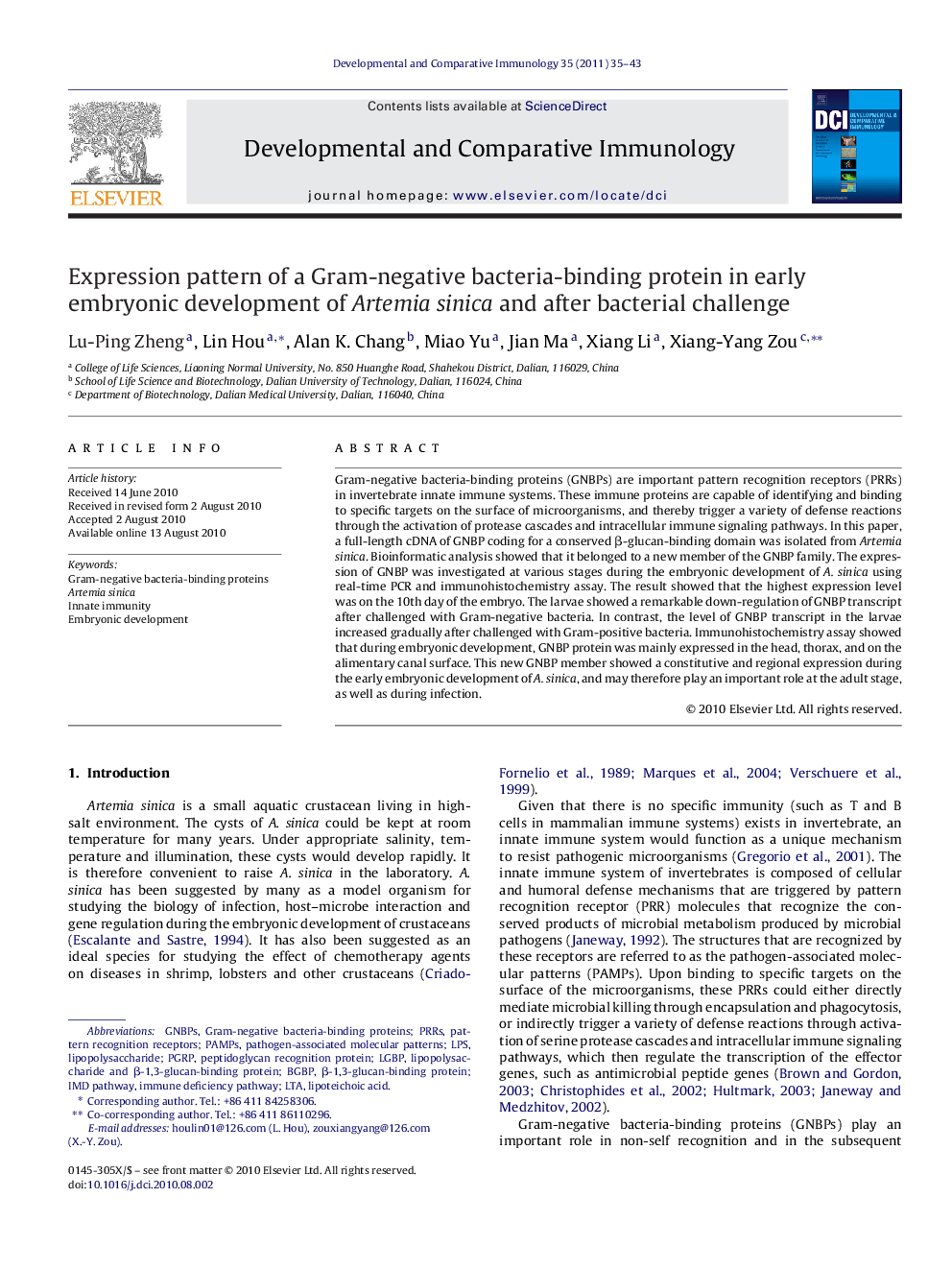| Article ID | Journal | Published Year | Pages | File Type |
|---|---|---|---|---|
| 2429539 | Developmental & Comparative Immunology | 2011 | 9 Pages |
Gram-negative bacteria-binding proteins (GNBPs) are important pattern recognition receptors (PRRs) in invertebrate innate immune systems. These immune proteins are capable of identifying and binding to specific targets on the surface of microorganisms, and thereby trigger a variety of defense reactions through the activation of protease cascades and intracellular immune signaling pathways. In this paper, a full-length cDNA of GNBP coding for a conserved β-glucan-binding domain was isolated from Artemia sinica. Bioinformatic analysis showed that it belonged to a new member of the GNBP family. The expression of GNBP was investigated at various stages during the embryonic development of A. sinica using real-time PCR and immunohistochemistry assay. The result showed that the highest expression level was on the 10th day of the embryo. The larvae showed a remarkable down-regulation of GNBP transcript after challenged with Gram-negative bacteria. In contrast, the level of GNBP transcript in the larvae increased gradually after challenged with Gram-positive bacteria. Immunohistochemistry assay showed that during embryonic development, GNBP protein was mainly expressed in the head, thorax, and on the alimentary canal surface. This new GNBP member showed a constitutive and regional expression during the early embryonic development of A. sinica, and may therefore play an important role at the adult stage, as well as during infection.
